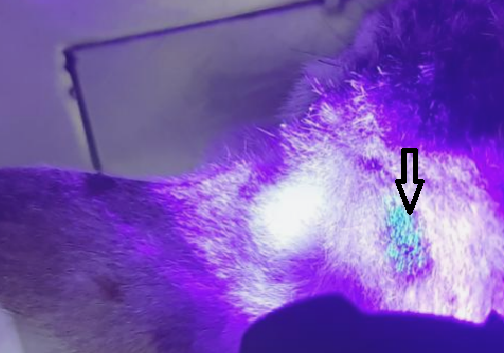Dermatophytosis in Clinically Infected Cats: Diagnoses and Efficacy Therapy
Dermatophytosis in Clinically Infected Cats: Diagnoses and Efficacy Therapy
Alsi Dara Paryuni1, Soedarmanto Indarjulianto2, Tri Untari3 and Sitarina Widyarini4*
Lesions from dermatophyte infection in body part of cat with alopecia, erythema, and scale in cat dermatophytosis (white ring).
Ear of cat with fluorescence (apple blue-green color), under Wood’s lamp examination (black arrow).
Fungal colony of Microsporum canis; Cottony, white to buff in colour; with increasing age becomes orange-brown (black arrow).
Microscopic structure of Microsporum canis with Lactophenol cotton blue stain (black arrow).
Macroscopic lesions progress (decrease in severity) on treatment with 2% Ketoconazole cream: A. Before treatment (red circle), B. The last day (day 21st) of treatment.










